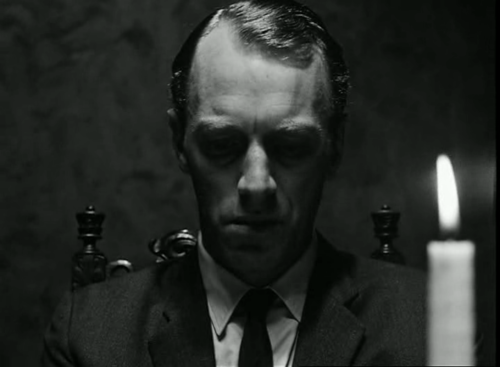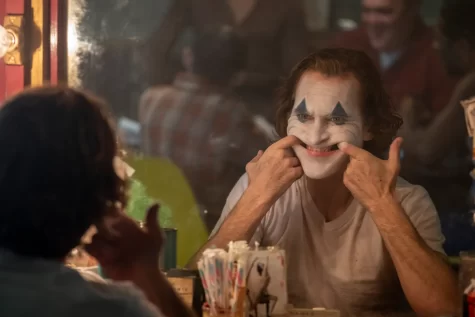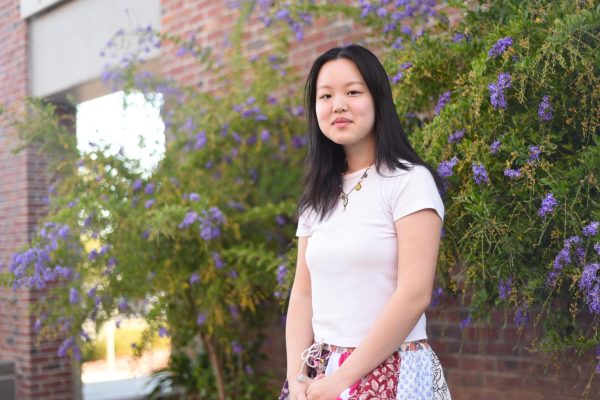Drawing a line between art and suffering
Understanding the role of dark themes in entertainment and mental health

AB Svensk Filmindustri / Metro-Goldwyn-Mayer
The 1968 art horror film Hour of the Wolf explores the nature of dark thoughts intruding on ordinary life.
March 20, 2023
An insomniac artist haunted by the muses of his past. A smoking pistol pointed at his lover. These are some of the provoking images that West Valley College film professor William Clay encountered when he was first introduced to the 1968 art horror film “Hour of the Wolf.” Though initially appalled by the horrific depictions of the film, Clay recalls being enthralled by the existential topics the film was unafraid to deal with and the riveting lens it was depicted through.
“If you want to horrify somebody, you make it as real as you possibly can,” Clay said. “[Dark] films like those are trying to get at very specific poignant and difficult social issues — issues about belonging and identity, but they’re doing it [in] a smokescreen of dark themes. It’s all of these normal human issues we’re dealing with [that are] very difficult for us, but if we have a little bit of distance, it allows us to deal with them safely.”
Similarly, De Anza College film instructor Christina Wright notes that films with darker themes — specifically the horror genre — originated as an art form with the intention of creating a safe and controlled environment for someone to explore internal struggles that are often kept hidden. In conjunction with being an instructor, Wright works as a social-emotional arts facilitator, integrating the innate benefits of the arts with mental health practices for self-discovery and empowerment. Through her work, Wright has learned that for viewers, seeing their own adversities reflected and ultimately overcome in film can be a powerful form of catharsis.
“People generally, whether we have diagnosed mental illness or [are] just any human being in life, want to feel seen and we want to feel heard,” Wright said. “There is a connection of that feeling seen and feeling heard when you can find a character in a film that you really identify with. I think that can be a very powerful and empowering experience for someone.”
Knowing that his film students often communicate personal experiences in their film writing, Clay quickly grew conscious of the growing trend of darker and heavier topics within student-produced projects, which he attributes to the COVID-19 pandemic. In a time with an unprecedented rate of declining mental health and a media landscape culture where mental issues are considered a counterpart to creativity, Clay observes a concerningly high concentration of negative themes in art and entertainment. He emphasizes the importance of addressing potential repercussions. For instance, he feels that mass depictions of trauma and conflict have led to a “pornography of despair” in media that when constantly consumed, can lead to insensitivity surrounding these issues.
“People are now used to seeing conflict and seeing the worst in the world,” Clay said. “The fact that we’re passive observers to this is something that by now we’re accustomed to. Over time, you’re going to start to normalize a lot of trauma disasters and we see this a lot in the political specter right now, [where] a lot of really bad behavior that we would never have accepted years ago now is the norm.”
This sentiment is evident in freshman Giljoon Lee’s desensitization to dark material due to exposure from an early age. Lee regularly reads books that expose him to the troubled side of the human experience, specifically the works of American transgressional novelist Chuck Palahniuk, who infamously writes about addiction and violence through a graphic lens. Lee recalls his earliest encounters with these novels inciting such a deep disturbance in him that it “quite literally made [him] want to throw up.” However, despite his initial reaction, Lee chose to explore how consuming the dark material could benefit him in navigating dark areas in his own life.
“I think it’s overly simplistic to say that darker pieces of art are mentally damaging,” Lee said. “While in certain aspects they may inflict harm, they may genuinely be comforting and help destigmatize the taboos of society, [so] the reason I consistently come back to these darker pieces of art is because, frankly, I like them.”
According to Clay, entertainment in the media landscape is largely driven by teenage and young adult audiences similar to Lee, explaining why current generations steeped in declining mental health and a prominent online presence have embraced the melancholia genre to an unprecedented extent. Lee observes the rampant effect this phenomenon leaves — the value of art is defined by how much of a negative emotional impact it can make. As a result, the widespread fixation on art with darker themes pushes creators and audiences to exclusively appreciate this genre.
“In terms of the art that people produce, there is a sense of, ‘if it’s not dark, it’s not good’ or ‘if it’s not dark, it’s not deep,’” Lee said. “As a society, we are under the assumption that darker, grittier topics are more artistic, while lighter, happier, more joyful topics are considered as shallow.”
Clay’s teenage experience was characterized by listening to darker music, which he says he was drawn to because it was a source of empathy for his own struggles. However, he notices that indulging in these pieces of art can lead to the glamourization of mental instability. Similarly, junior Vidhi Goel began listening to darker music early on in their teenage years. Goel saw her own mental struggles reflected in the lyricism and was able to deeply connect with it. However, Goel admits that at times, the music made them feel like mental illness was “something to be proud of.”
“[The music] made me feel a little bit less alone sometimes,” Goel said. “But it allowed me to wallow in some of my bad moods and made sadness more of a comfortable feeling to me. By the time I realized how genuinely harmful it was to my mental health, I [was] so connected to the art behind it that I didn’t want to give that up in favor of my mental health.”
Echoing Goel’s criticism, Wright sees the value in artistic pieces that intentionally cultivate a cathartic space. However, she feels that if films choose to explore the darker side of human nature, stories should be counter-balanced with positive solutions to the challenges we encounter.

“I would hope that filmmakers would be responsible in showing the way forward for any of us that are dealing with mental illness so that we don’t feel like it’s being portrayed as [something with] just no hope,” Wright said. “Somebody who sees these themes may have an opposite reaction and just think, ‘I’m gonna go into a dark hole and I’m going to be violent and that’s just going to be my future because there’s no other path.”
As teenagers, Goel and Lee both observe a proclivity for their peers to romanticize mental struggles when it is depicted in the form of art. Clay views this tendency for youths to immerse themselves in art with darker themes as detrimental to their worldview, advising viewers to diversify their consumption patterns so that they are reminded that “this is not the only thing that’s going on.” In a turbulent modern age, Wright highlights the comfort that can be garnered from consuming art that doesn’t stray away from darker subjects but ultimately ends with a hopeful outcome that leaves a positive impact on viewers.
“That idea of longing for a hopeful future is something that a lot of people don’t have,” Wright said. “If we particularly have media that paints positive futures or paints positive images of the things we feel we’re lacking in our current society, if we see a positive outcome that’s coming from a TV show or a film, then that gives us hope that maybe we can mirror that in real society. Let’s try to mirror that in real life and actually make that really happen.”


















